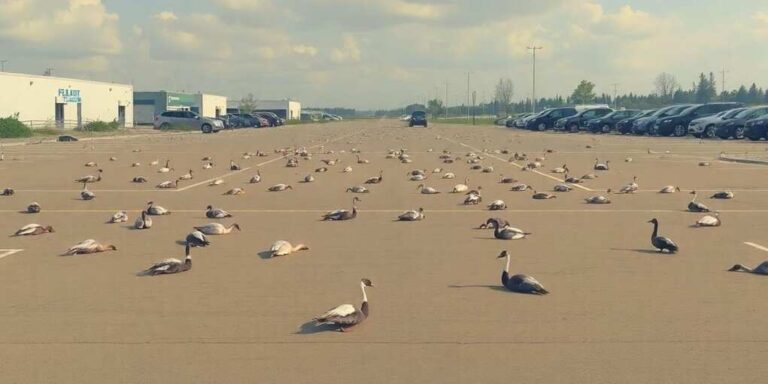
At the University of Cincinnati, something unusual has scientists calling for answers. More than 50 birds were found dead across the campus in a single day — a number far beyond what researchers say is normal.
Dr. Ronald Canterbury, an ornithologist who runs the university’s long-running bird-banding program, said his students typically find only a handful of birds on their morning survey routes. That changed when they suddenly came across dozens of lifeless birds scattered across walkways, lawns, and under glass buildings.
“They are telling us something is wrong,” Canterbury said. “Scientists like me are sounding the alarm. But we don’t have enough people taking action.”
The discovery sparked protests and a petition from students demanding the university make immediate changes to reduce bird collisions. Canterbury believes the spike in deaths is tied to weather shifts — weeks of drought followed by heavy rain that disrupted migratory patterns. Those conditions, he said, pushed large flocks into the city, where reflective glass buildings created deadly illusions of open sky.
The university has confirmed that it’s “committed to a comprehensive approach” to prevent further deaths. Officials said the Old Chemistry building has already been renovated with bird-safe glass, and early results show it made a difference. Canterbury reported that fatalities there dropped from about 20 per season to just four after the retrofit.
Students with the activist group Queer Birders of Cincinnati organized a rally on campus earlier this week, pressing for wider upgrades across all university buildings. Their petition, titled “Make Buildings Safe for Migrating Birds on the University of Cincinnati’s Campus,” is gaining signatures.
The issue goes far beyond one campus. Studies summarized by the National Audubon Society estimate that over one billion birds die every year in the United States after colliding with glass structures. Scientists say the problem is largely preventable through simple solutions like patterned windows, exterior screens, and reducing light pollution at night — measures that can drastically cut down on deaths during migration seasons.
Canterbury and his students have been tracking bird collisions around Cincinnati for more than ten years, using tags and mapping tools to identify the deadliest areas. Their research has been featured in university reports, but activists now argue that the data should push officials to act faster.
Canterbury said that while the Old Chemistry building is a success story, many of UC’s newer glass-heavy structures remain a serious threat. “We have the data, we know what works, and yet we keep building the same way,” he told local reporters.
In his view, the mass mortality event on campus was a warning sign that shouldn’t be ignored. “It’s not just about a few birds,” he said. “It’s about what their deaths are telling us about the environment, about our cities, and about how disconnected we’ve become from nature.”
University officials said they plan to review additional building upgrades next year. For now, Canterbury’s team continues its dawn patrols, recording each new collision and hoping their findings will convince more institutions to change before the next migration wave begins.

